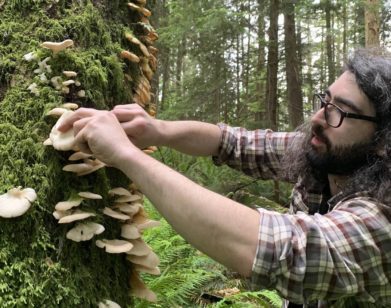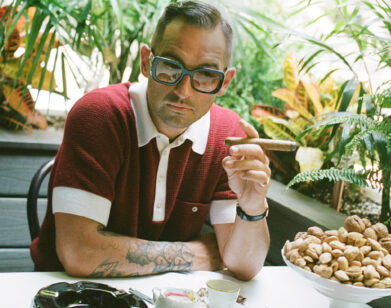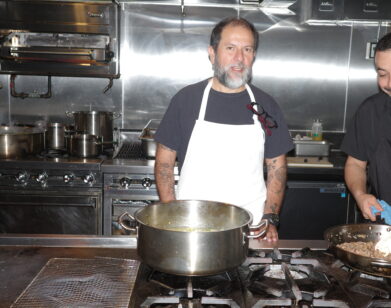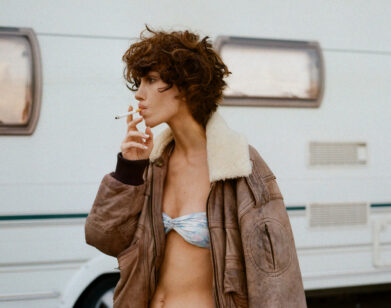OPENING
Can a Portland Gallery Make It In New York? The Girls Behind ILY2 Think So.
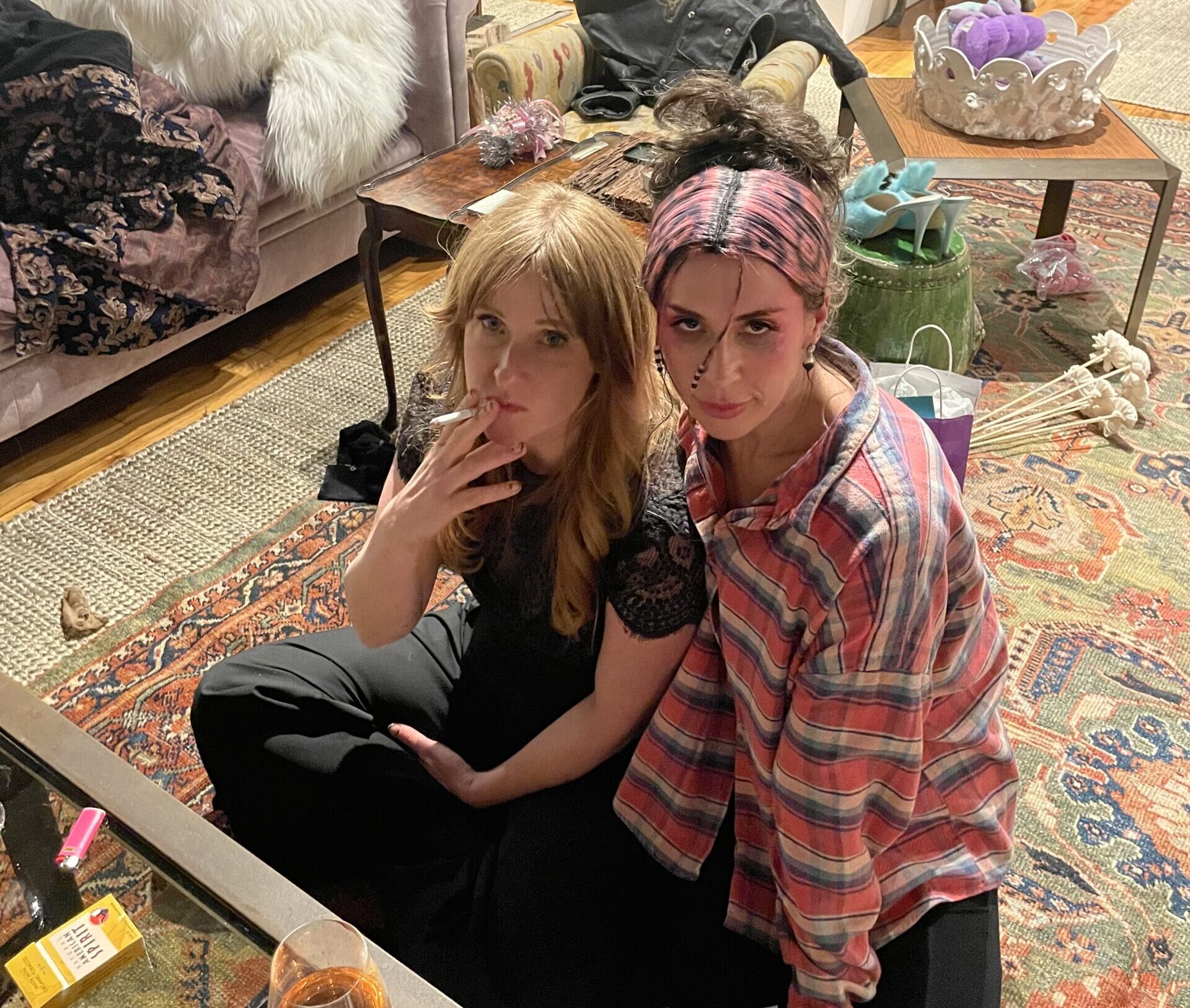
Jeanine Jablonski and Allie Furlotti, photographed by Jamie Edwards.
Meet anyone opening or even running an art space and they’ll pump out the same old adage: “We’re doings things a little differently here.” Who knows what that means–or if it means anything at all–but the women behind ILY2 might actually be shaking things up. The Portland-based gallery, founded in 2020 by Allie Furlotti and directed by Jeanine Jablonski, is expanding into a new space in Chinatown this Spring, to be led by art-world veteran Rosie Motley. The trio are envisioning an approachable, artist-led refuge that involves flexible opening times and a fun roster of public programming. But most importantly, they told me, they promise not to use “cortisol as a weapon.” While their exhibitions have featured consistently hot rising artists, it’s a risky time for anyone to venture into New York’s aggressively saturated art market as it teeters on the edge of alleged bankruptcy. Just before their inaugural opening—which includes work by Bonnie Lucas, Hannah Levy, and Y. Malik Jalal—I touched base with the trio to find out why they decided to take the leap, how they landed on that cute name, and what was going on with that intense Scorpio full moon.
———
ALLIE FURLOTTI & JEANINE JABLONSKI
EMILY SANDSTROM: Well, what’s Oregon’s art scene like?
JEANINE JABLONSKI: I think people come to Portland and assume that there’s nothing interesting here. But it’s both provincial and international. We have a few artists run spaces that are really amazing. We have the Portland Institute for Contemporary Art. We have a number of nonprofits. We have some galleries that are more regional. I was just talking to someone in Chicago about this thing that happened, where I was in a booth with an advisor and they were like, “My client doesn’t shop in Portland.” They don’t necessarily walk into the galleries in their city, even though we could be showing the same artists that they’re going to see at Basel or in New York.
ALLIE FURLOTTI: Also, I honestly feel like the show Portlandia has acculturated into a lot of people’s perceptions of Portland.
SANDSTROM: That’s funny.
FURLOTTI: It’s so pervasive. Every time I meet people, old or young, they’re like, “Oh, my god, is it like Portlandia?” That kind of comedy restricts people’s ability to see the city for anything other than baristas, food, hiking and a little bit of woke nonsense. And it is truly really like that. But the art scene is suppressed in this way, because the city is not exactly large or sexy.
SANDSTROM: I had a really similar conversation when I was in Dallas. People were telling me that Texan artists showing at Dallas galleries don’t really matter, it has to go through the New York circuit or another kind of coastal incubator to have any market value.
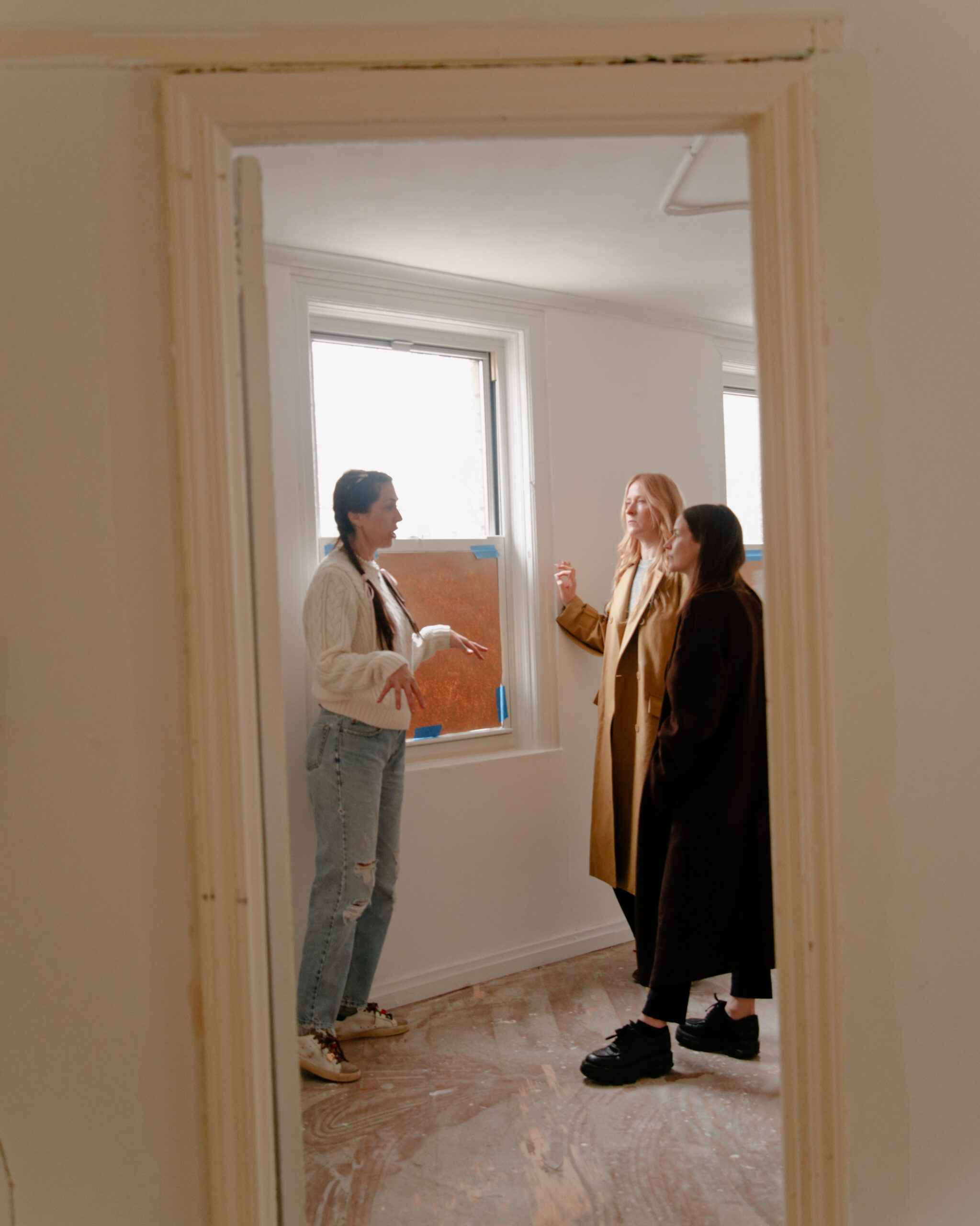
Photo by Curtis Wallen.
FURLOTTI: Right. It needs a big city filter to prove it. It’s like a fraternity. It’s very patriarchal.
JABLONSKI: One of the things that’s foremost in my mind for the space in New York is that we’re going to be exporting some people that I’ve had relationships with here in Portland for a really long time. But I’m very knowledgeable about what’s been made and created here over the last 20 years, and I want to continue that dialogue. We’re just entering into a different dialogue now, but we’re doing it in a way that I think is different than other people have done it.
SANDSTROM: What feels different about it?
JABLONSKI: Well, I think a lot of times when people expand, they physically expand. I’ve seen a lot of people do that, especially when they open a new location or a location in a different city, it feels so much about square footage. And we are not doing that. It’s actually the opposite. The scale is quite small and modest. We’re doing something that feels sustainable.
FURLOTTI: And necessary.
JABLONSKI: And also reasonable for our small staff.
SANDSTROM: Where did the name ILY2 come from?
FURLOTTI: Well, I have to first just give a shout-out to my husband. We were texting back and forth and I was like, “ILY2” because I abbreviate everything and I have since the ’90s. LOL is not new for me. And he was like, “That’s the name.” And I was like, “Oh, you’re right.”
SANDSTROM: I remember seeing you guys at NADA a few years ago and being like, “Oh, that’s so cute.” I don’t know if I spoke to you guys there, but I thought you were Canadian for some reason.
FURLOTTI: Because we were so nice.
SANDSTROM: What’s your read on the New York art scene?
JABLONSKI: I really want to say… No, I’m not going to say that. I don’t know. I don’t live there. My read is that it’s like a train that keeps moving and there’s artists that hop on and hop off and then there’s the mainstay, which oftentimes are female-led galleries. I’ve just watched someone like Bridget Donahue‘s program change over time. Ultimately, it’s always such a personal conversation, because it’s based on who you’re paying attention to.
FURLOTTI: 100%. It’s a really top-down model. My intuitive understanding is that New York is oppressive and it’s nonstop. It’s grinding. It’s capitalist. It’s commodified. It’s not women centered. It’s not family centered. It’s not centered in humanistic values in my opinion. It sounds so hard to be an artist there. It sounds like you go, manic-dead-manic-dead. And that’s sad.
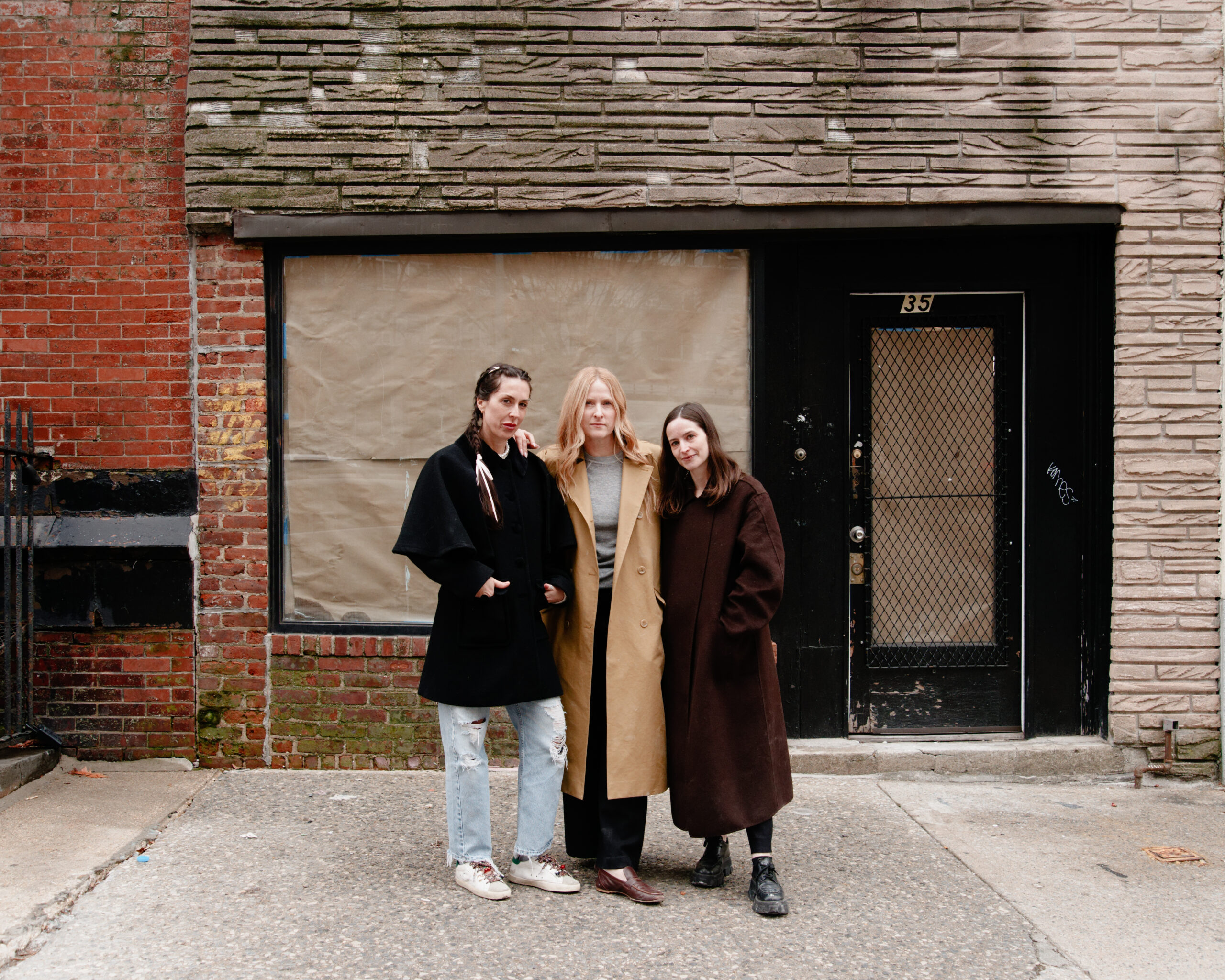
Photo by Curtis Wallen.
JABLONSKI: I totally agree. But I also really hesitate to put a mark on a place that I don’t live. Rosie has been in New York for a long time, and I’ve talked to her about what it’s like to step out of that and now work for a female-led gallery. Our values are just different, and the infrastructure that I’ve created internally for employees, I think my hope is that that branches into how we operate in New York and that means–
FURLOTTI: Not using cortisol as a weapon.
JABLONSKI: Yeah, totally. The expectation that you will burn yourself out, it’s not it for us.
SANDSTROM: I’m anticipating a lot of galleries closing this summer in New York, and I think a lot of people are. It’s an interesting time to open. Do you guys feel like this is a risk?
JABLONSKI: Of course it’s a risk. But I keep saying that if there was a time to take a risk, it’s now.
FURLOTTI: 100%.
JABLONSKI: Also, the way that we are opening there is so conducive to the way we operate. It’s always really intuitive. And we hired Rosie in the city because we really wanted to hire a New York director. But I think it’s important that we don’t get into a position where Rosie is attached to her desk five days a week with no ability to move around. So, you’ll find that our hours there fluctuate based on the show or the activity that’s happening.
FURLOTTI: Right. If a container is so rigid, everyone has to adapt to that container. And if we’re going to come in with this flexibility, that’s going to be contagious and such a relief. I think it’s going to be, not oppositional at first, but confusing because it’s a paradigm shift.
SANDSTROM: Yeah. It feels like we could use a breath of Portland here.
JABLONSKI: I’m excited about the energy. I was in Chicago and I met these young dealers there, and they really fanned out and it was cool. Sometimes I have to remember that the gallery is young, but my career is long. The gallery is just a baby. So, it does this strange push-pull thing that people respond to.
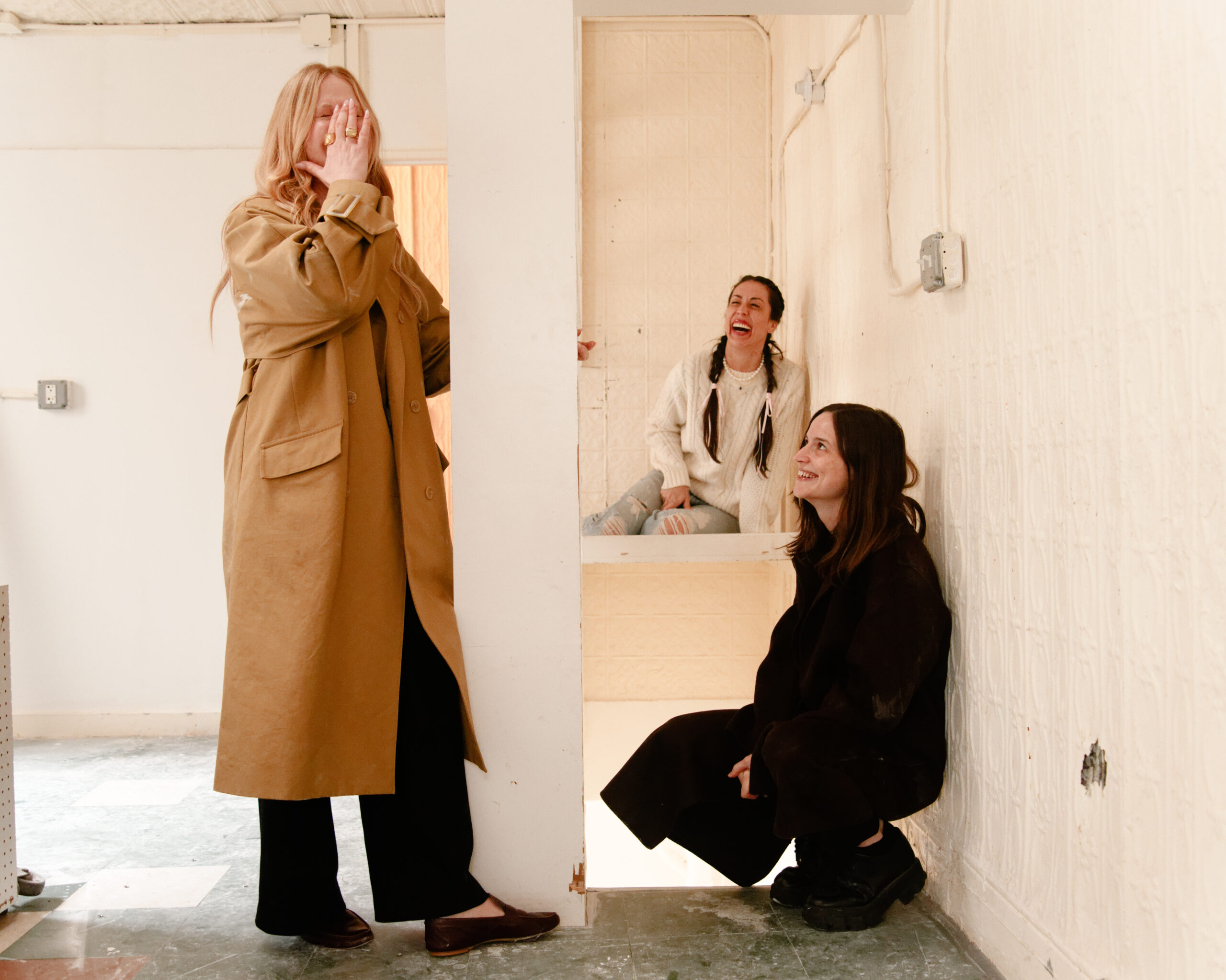
Photo by Curtis Wallen.
FURLOTTI: Big time. We sit in a tension place, not a fixed point. And we don’t operate in the tension of duality either. We’re not going back and forth between one thing or another. We’re always pivoting depending on what is needed by our artists, by us. And I think that if we’re not in service to the community, then it’s going to be a losing game for everybody ultimately.
SANDSTROM: What does being in service to the community look like for you in the most practical sense?
JABLONSKI: It’s about setting a precedent of how people are treated and how people are paid, things like that. We also have things like an apartment upstairs for the gallery, so we utilize that for various nonprofits and if they have artists that come through town. So, a lot of it is resource sharing.
FURLOTTI: Yeah. No gatekeeping. Also in a sense, the energy in the gallery is really inviting. “Hi, how are you? Do you want something to drink? What’s going on?” We don’t care who the person is. There’s no systematic displacement based on financial gain.
JABLONSKI: We definitely break down that intentionally. Our office is built to completely subvert that white cube shady attitude of not talking to you.
FURLOTTI: That is built to make people neurotic and anxious around art. It’s not expansive, it’s damaging.
JABLONSKI: It’s not generative. It’s also not connected to the way that we operate as people.
SANDSTROM: Could you guys each individually sum up the ethos of the gallery in three words?
FURLOTTI: Family, breaking old patterns, evolving.
SANDSTROM: Love that.
FURLOTTI: I really also wanted to say tangerine for some reason. I just have to be honest. I don’t know.
SANDSTROM: Like the color?
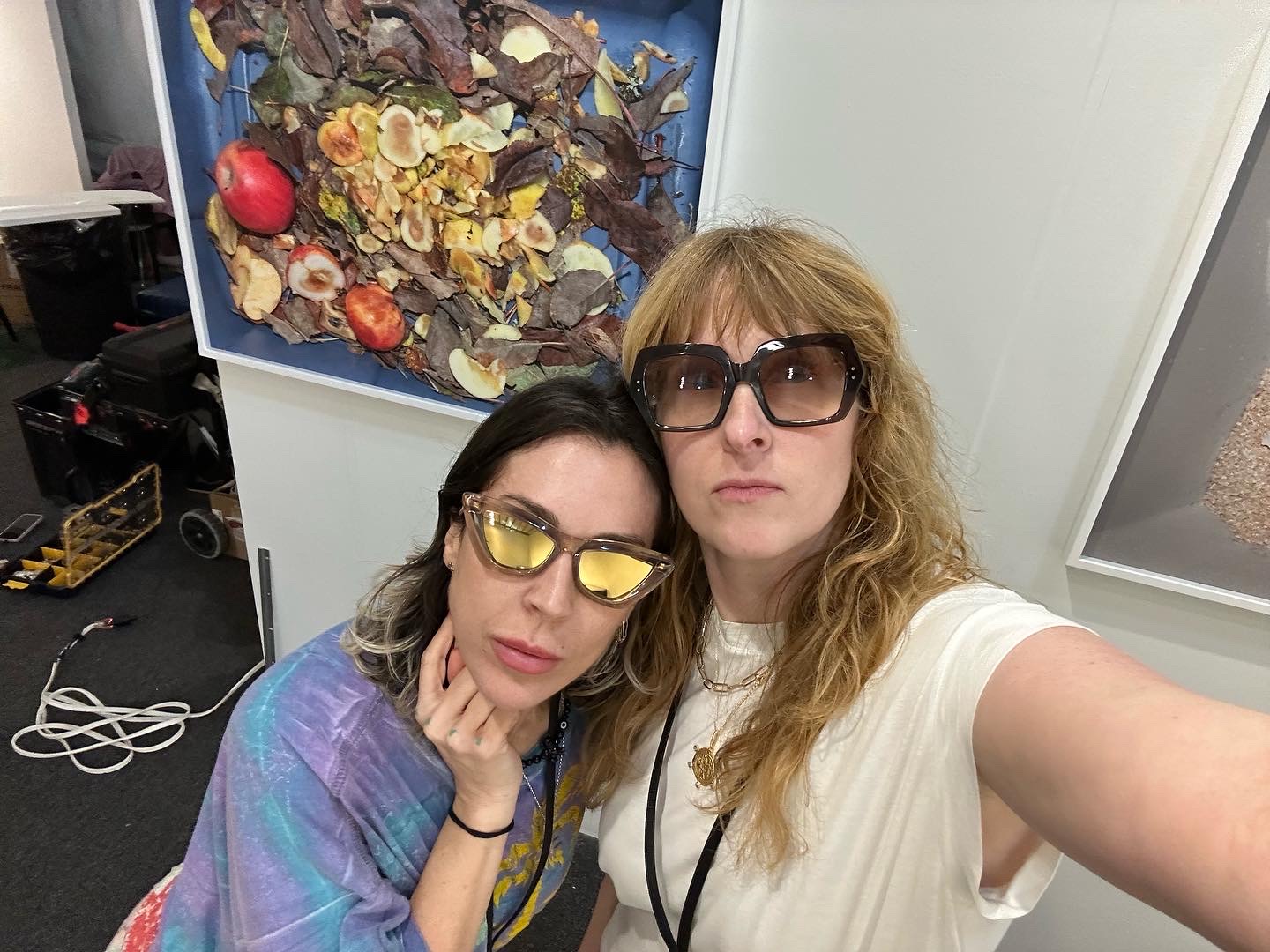
FURLOTTI: The fruit was floating around in my head. I don’t know.
JABLONSKI: I would say responsive and reflective and–there’s also an earnestness that we all have that I think people find a little bit alarming… I’ll stop there.
SANDSTROM: I like that. I’ve been following you guys since that NADA booth, and your programming is very young and sexy and on the nose. How are you guys finding artists and developing relationships with them?
FURLOTTI: That’s all Jeanine.
JABLONSKI: I mean, thank you. So much of it is just leaning into my intuition. But honestly, my favorite way to find out about artists is through other artists. That is top, top, top.
SANDSTROM: Yeah. So, it sounds like it’s really driven by the desire for connection and curiosity.
JABLONSKI: Right, just a genuine openness. I’m always looking. And having Rosie, we have really similar aesthetics, but she’s 10 years younger than me. There’s that dialogue that’s exciting to me because sometimes it can feel a little bit like you’re in a silo, and we’re able to ping off of each other.
FURLOTTI: We really, really lucked out. Jeanine and I are really big personalities, and Rosie adds in a very beautiful, quiet, calm, measured way.
JABLONSKI: Totally. But as I get to know her, the more I notice, she’s also a little bit punk.
SANDSTROM: Do you guys have any advice for the Scorpio full moon tonight?
FURLOTTI: Yes. If anybody has Scorpio placements in growth edges like communication, Mercury or Venus and love, it means the shadow is present. Scorpio is all about what’s hidden and what’s behind the scenes. And that doesn’t mean bad or scary, but it can be very challenging because it’s not in the light. It’s a really big opportunity for people to look at things that are hard or are being denied that are really good and accept them and make an evolution forward in their emotional personality. But it’s hard. It’s self-worth and that can be really challenging, but it’s really potent.
SANDSTROM: It sounds like a good week for you guys to open.
———
ROSIE MOTLEY
EMILY SANDSTROM: How did you meet Allie and Jeanine?
ROSIE MOTLEY: I was running my own gallery from 2021 until the end of last year. It was called Someday, it was right up on Walker Street. I knew I was closing, and I was talking to a few different galleries and was really struggling with this idea of going back into a more blue chip environment. I was just feeling really disillusioned in the art world in general. I had heard that ILY2 was looking for a director in New York, and I had followed that program and really liked a lot of the shows she had done and knew from the artists that she had worked with. And so Hannah Levy, who’s actually in the first group show, put us in touch and we just had a conversation. I think mutually really felt immediately like a good fit.
SANDSTROM: How would you describe the ILY2 programming and the ethos?
MOTLEY: I think it’s really intuitive. Right now, all the artists we represent are female or female-identifying. That’s not a rule. I think that we’re not to overly prescribe or pit and hold ourselves in any way. I think it’s something that’s happened pretty naturally and it actually, I think has more to do with how the galleries run internally, which is this idea of nurturing and care. Ali and Jeanine are both mothers, and when I started in the art world, there were very few examples of directors and gallery owners that had small children or did it in a way that seemed even remotely possible. So having that as an example, but also something that extends to the way that we want to nurture the artists and the community and the public and visitors–it’s just a different level of consideration and care, I would say, than all my past roles.
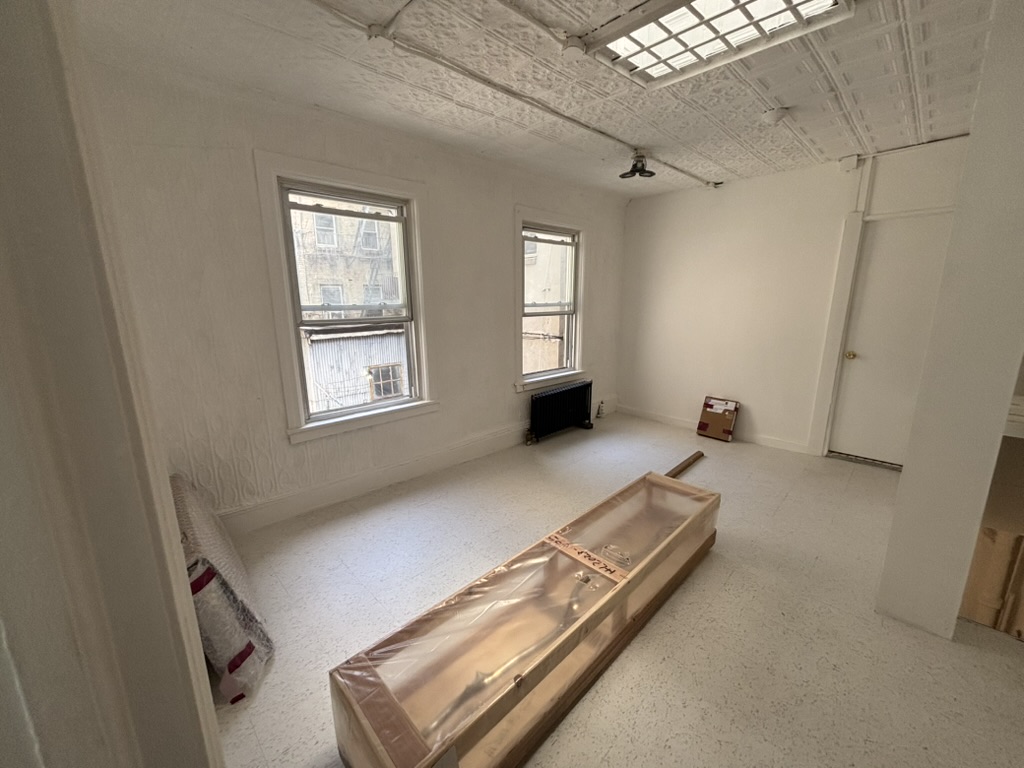
SANDSTROM: Did you know much about Portland’s art scene coming into this?
MOTLEY: I’m learning a lot more about it. I think there’s a lot of space and freedom there, because it’s more affordable, obviously. There’s a fair amount going on, but it feels like a lot of the kind of over-professionalization that has happened as a necessity here isn’t happening over there, which means that people can be a little bit more experimental.
SANDSTROM: Do you feel like the space will be kind of the fusion of that formalism and experimentation?
MOTLEY: Totally. And because our artists are kind of all over the place, it’s important for them to have more New York visibility. But also a space where we can cross collaborate, cros- pollinate with different galleries and artists that we’re not necessarily trying to monopolize their careers or geographically assert some sort of control over in terms of representation all the time.
SANDSTROM: What kind of space do you think ILY2 New York will end up being?
MOTLEY: Part of what was so attractive about the space, architecturally, is how versatile it is. Including the upstairs because that can be used as viewing room space or an extension of a show. We have some really cool crazy ideas for the guest room about letting artists come in and do wallpapers or do a floor.
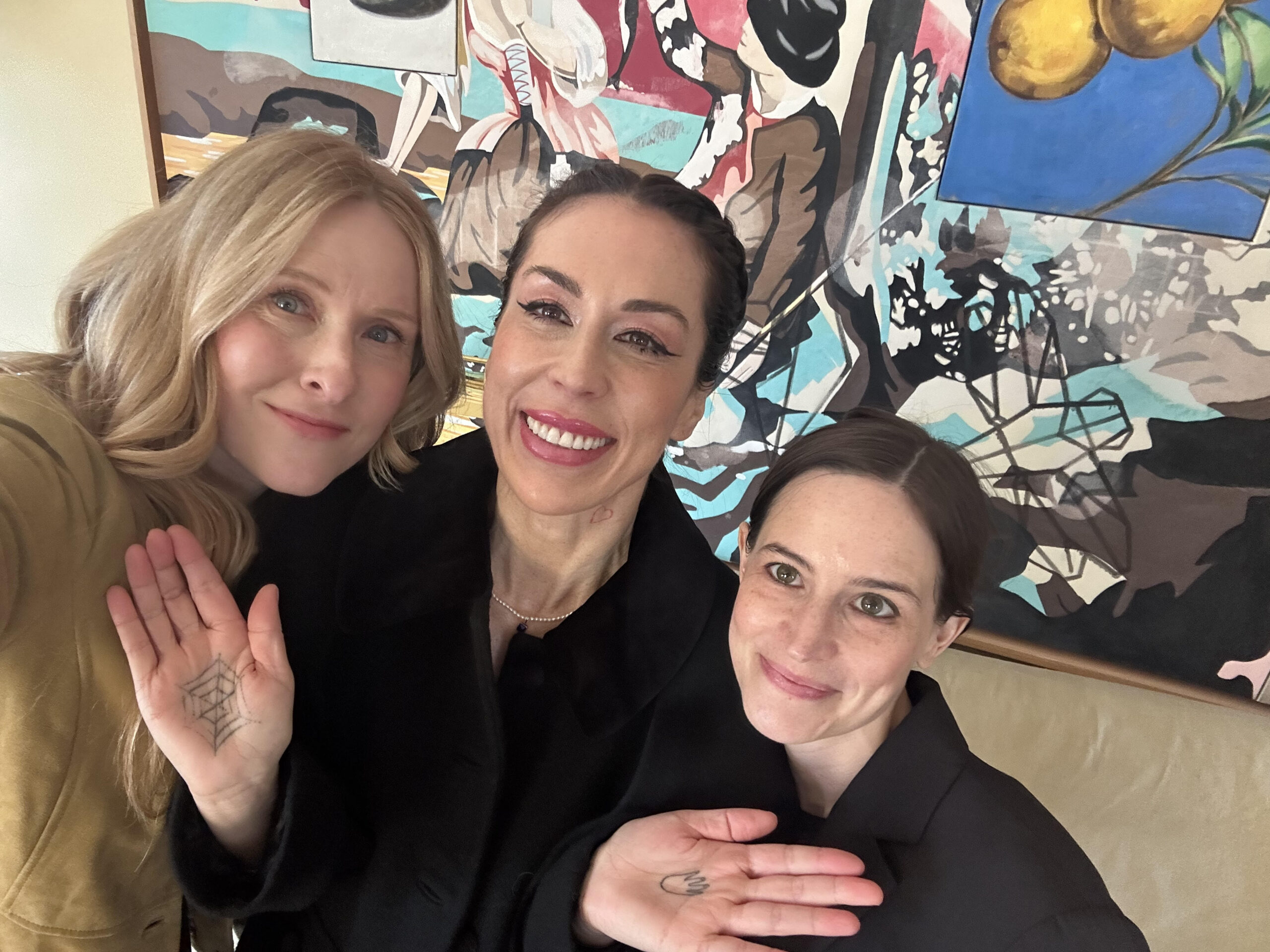
SANDSTROM: That’s so fun.
MOTLEY: And being able to have artists be in the space for longer periods of time to really think through how things are installed or even finish fabrication in there. So it’s an extension of the Portland space, but it’s also by nature more experimental in that way.
SANDSTROM: Do you have fears or anxieties about the market right now?
MOTLEY: Sure, but also you saw the space, right? I keep explaining when people ask about it, it’s a duplex, but it’s not like this massive poured concrete echo chamber. It’s very humble in a lot of ways. And it’s like an old building and I feel like it’s the perfect amount of space to allow breathing room, but also it’s not something that’s going to completely swallow us, and it also doesn’t swallow the work either. I think a lot about when artists are making delicate work or intimate work that gets drowned out in these massive blue chip spaces. And obviously the costs are very different for this type of space too. We wanted to be mindful of that because we want to be able to put resources back into an artist that’s like, “I want to produce this crazy thing,” or that needs help with their studio practice.
SANDSTROM: Do you feel nervous to be by yourself over here? Or is it a lot of good freedom?
MOTLEY: We’re geographically separated, but just having the support of a team, even if it’s remote, it already feels so much better than what I was doing before.
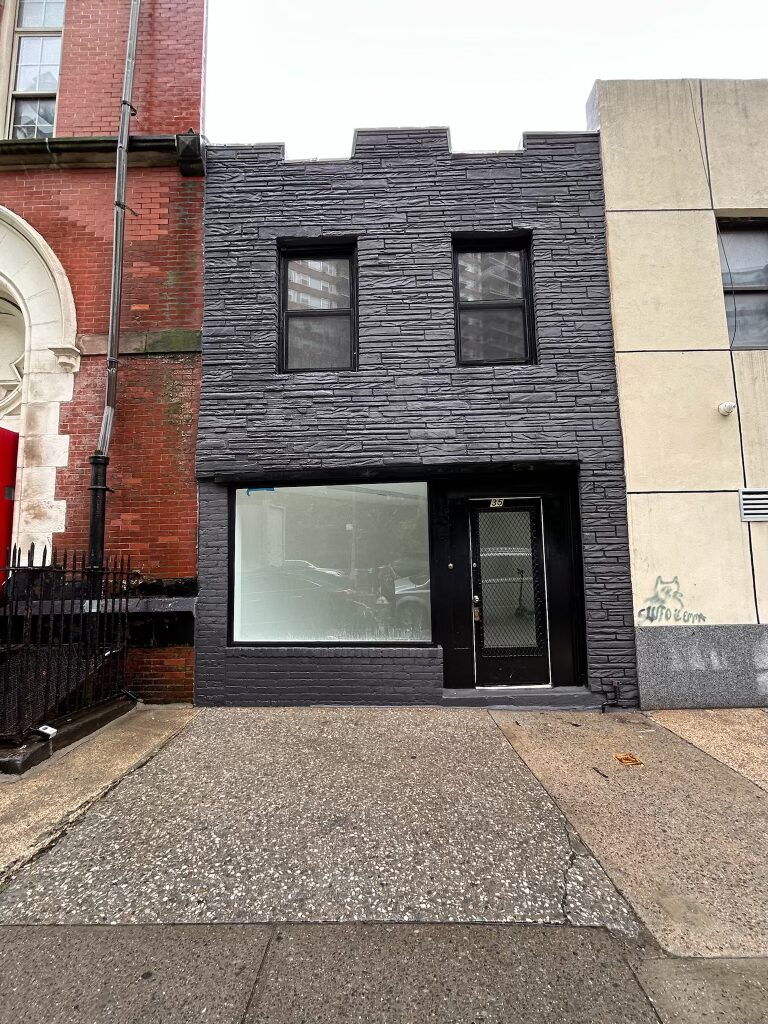
SANDSTROM: That’s awesome. The sense I got when I spoke to the girls this morning was that New York could really use something different and more dynamic than the typical the white cube environment.
MOTLEY: I know it sounds counterintuitive because of all the market concerns, but I’ve just noticed going to thesis shows where when the market was really hot, it was scarier and harder for artists to take certain risks. It just felt like you were so close to certain opportunities or there’s money on the table kind of thing. And I think that right now, because there’s so much kind of uncertainty in a weird way, it’s like I’m seeing how people are like, “Fuck it.”
SANDSTROM: That’s a really cool way to think about things, actually.


